
Single Seater Front Suspension
Chris Green - 15/11/04 at 01:28 PM
Hello All,
I managed to take some pics of the front suspension on the Formula BMW and Renault cars at Donnington back in September.
I thought you'd like to see them. The fact that they have a single damper is interesting. Perhaps someone could explain it to me?
Regards,
Chris.
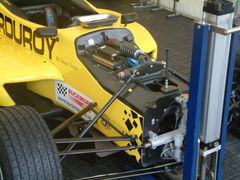

Description
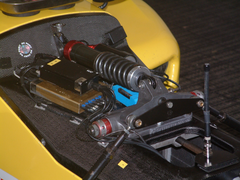

Description
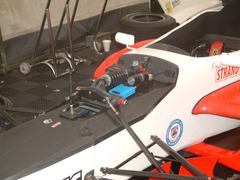

Description
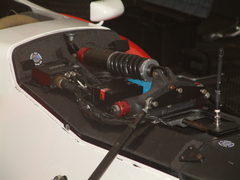

Description
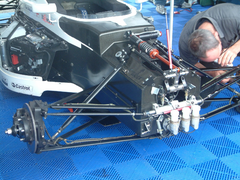

Description
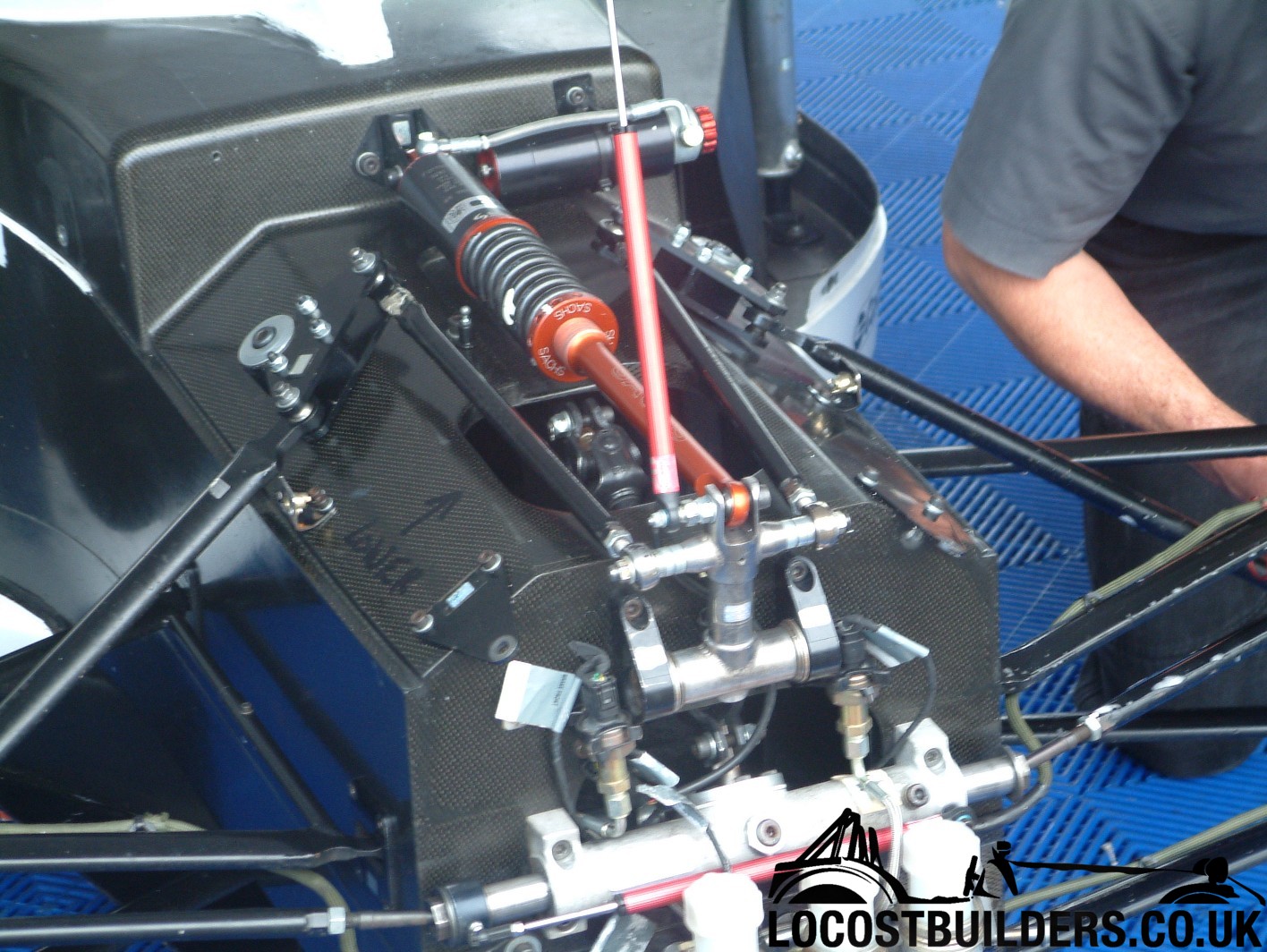
[Edited on 15-11-04 by Chris Green]
[Edited on 15-11-04 by Chris Green]
Chris Green - 15/11/04 at 01:40 PM
ok, i can't get these pictures to show.
What am I doing wrong?
[Edited on 15-11-04 by Chris Green]
ned - 15/11/04 at 01:43 PM
try adding the http:// bit..
Chris Green - 15/11/04 at 01:46 PM
ok, sorted now.
Sorry about the size of the pics. I'll keep them below 600 pixels in future.
Thanks.
[Edited on 15-11-04 by Chris Green]
mookaloid - 15/11/04 at 02:26 PM
It looks to me as though if one side causes the suspension to compress, then the other side moves by a similar amount acting a bit like a solid axle
would but not allowing the body to roll at all relative to the wheels.
But then again, what do I know?
 Mark
Mark
ceebmoj - 15/11/04 at 03:43 PM
the top set up look simaler to the three weal thing that was on hear a bit back exsept it was made from tuping not a casting ther was talk of it being
simaler to having a very still anty role bar
however the second set up looks much beter to me although I wonder how thay sofen or harden the anty role setting
Blake
PS what do I know
The Shootist - 15/11/04 at 05:38 PM
That the setup may have a tendency to balance the weight on both front tires?
Might save the weight of one shock, and simplify balancing the front damping rates.
Looks like roll rate would be controlled by the long thin shock which is pulled out of the way (vertical) in the last 2 pics.
chriscook - 15/11/04 at 06:06 PM
The 'long thin shock' looks like a linear potentiometer to me - to measure suspension movement. If you look on the steering rack you can see
one to measure steering too.
Peteff - 15/11/04 at 06:36 PM
It must be something in their regs because it would surely be easier and lighter to use 2 protechs. The linkage looks a nightmare and the movement
must be miniscule. The red thing looks like a steering damper. That spring must be 800 psi by the look of those coils. It looks like when one side
lifts it pushes the other side down and any extra movement is absorbed by the damper and spring.
MikeRJ - 15/11/04 at 10:09 PM
This arrangement gives zero roll stiffness at the front of the car. It's effectively like the opposite of an anti-roll bar (and some single
seaters use a 'Z' bar which actually looks like an anti-roll bar).
The purpose of this is covered in Allan Staniforths book, by IIRC it essentialy allows the roll stiffness of the car to be governed by one end of the
car only, simplifying adjustment. Probably more to it than that, but haven't read it for a while!
TheGecko - 16/11/04 at 01:48 AM
The third photo probably gives the clearest picture of what's going on.
The suspension push-rods act on the T-crank which can both pivot and slide left-right. In pure bump, the T-crank pivots and acts on the single
coil-over. In pure roll, the T-crank slides left or right and roll stiffness is provided by springs under those red covers (either small coil springs
or a collection of stacked, conical (belville) washers.
The advantages are completely independant control of bump and roll stiffness, single point control of ride height, and (probably) somewhat reduced
unsprung mass.
Oh, and it looks pretty 
Dominic

 Mark
Mark